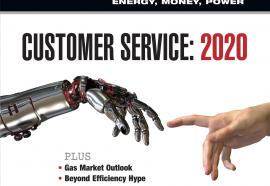In light of all the excitement created by smart-grid regulatory initiatives and stimulus funding, three clever tech startups have come forward with proposals for novel grid projects. In California, Western Grid Development proposes to install energy storage devices ranging in size from 10 to 50 MW at various discrete and strategic locations in PG&E’s service territory where the California ISO has identified reliability problems. Second, a company called Primary Power proposes to deploy a total of four advanced, 500-MVAR static VAR compensators (SVC) at three separate locations within the PJM footprint. Third, in Clovis, N.M., Tres Amigas plans to allow power producers to move market-relevant quantities of electric power and energy between and among the nation’s three asynchronous transmission grids: ERCOT and the Eastern and Western Interconnections.











